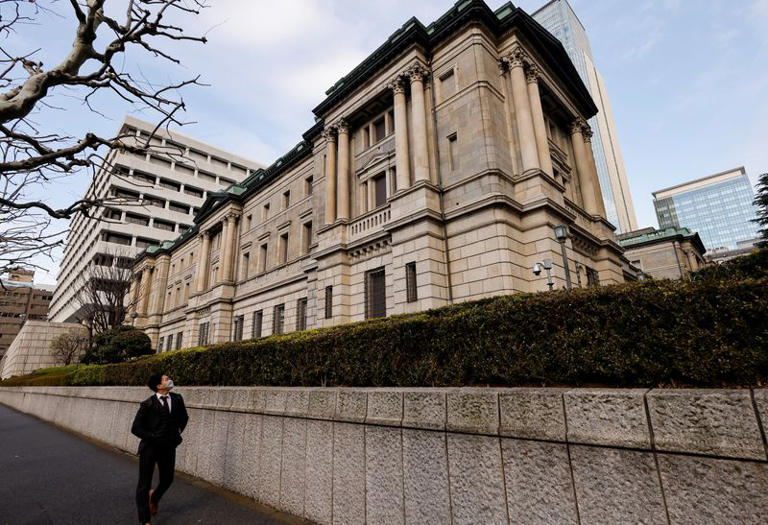On Wednesday, the Bank of Japan (BOJ) made a landmark decision by raising interest rates and introducing a comprehensive quantitative tightening (QT) plan, marking a substantial departure from its decade-long policy of aggressive monetary stimulus. This decision, which defied prevailing market expectations that the BOJ would maintain its current rate, raised the short-term policy rate to 0.25% from the previous range of 0-0.1%. This adjustment is the most significant increase in rates since 2008, reflecting a major shift in Japan’s monetary policy stance.
The decision was made during a two-day meeting of the BOJ’s board, which culminated in a 7-2 vote in favor of the rate hike. Alongside this increase, the BOJ announced a significant reduction in its bond-buying program. The central bank will halve its monthly bond purchases to 3 trillion yen ($19.6 billion), down from the current 6 trillion yen, starting in the January-March 2026 period. This move is part of a broader strategy to tighten monetary policy and gradually normalize the BOJ’s balance sheet after years of extensive asset purchases aimed at combating deflation and stimulating economic growth.
Fred Neumann, Chief Asia Economist at HSBC, highlighted the significance of this decision despite the backdrop of sluggish consumer spending. According to Neumann, the BOJ’s actions—raising interest rates and planning a gradual reduction in its balance sheet—signal a decisive shift towards monetary policy normalization. He noted that rising inflation expectations might prompt the BOJ to continue tightening its policy, with another potential rate hike anticipated by early next year if economic conditions align with the central bank’s forecasts.
The immediate market reaction to the BOJ’s decision saw the yen strengthen by as much as 0.8%, reaching a three-month high of 151.58 per dollar. However, these gains were later reversed. The yields on 10-year Japanese government bonds also saw a slight decline following the announcement, reflecting the market’s recalibration in response to the BOJ’s new policy stance.
In its accompanying statement, the BOJ emphasized that the rate hike was driven by broader wage increases, which are leading firms to pass on higher labor costs through increased prices for services. The central bank also expressed concern about the risk of inflation exceeding its target, given the ongoing acceleration in import prices, despite some recent moderation. This indicates the BOJ’s cautious approach towards managing inflationary pressures while navigating the transition away from its previous ultra-loose monetary policy.
The BOJ’s quarterly outlook report, released alongside the rate decision, maintained its inflation forecast of around 2% through fiscal 2026. This projection aligns with the central bank’s earlier forecasts, underscoring its commitment to achieving stable inflation over the medium term. Governor Kazuo Ueda is scheduled to hold a news conference later in the day to provide further insights into the BOJ’s decision and its implications for Japan’s economy.
This rate hike by the BOJ comes at a time when the U.S. Federal Reserve is considering its own monetary policy adjustments, with potential rate cuts on the horizon. The Fed’s anticipated move to lower interest rates, possibly as early as September, could reverse the aggressive rate-hike cycle that had led to a stronger dollar and contributed to a painful depreciation of the yen for Japan.
Despite expectations from a majority of economists that the BOJ would keep rates unchanged, the decision to raise rates and end negative interest rates, coupled with the bond yield control measures initiated in March, marks a significant shift in Japan’s monetary policy landscape. Governor Ueda has indicated that the BOJ will continue to adjust short-term rates to maintain a balance that neither overly restrains nor stimulates economic growth. The central bank aims to achieve a target rate range of 0.5% to 1.5% in the coming years, provided inflation remains sustainably around the 2% target. This strategy reflects the BOJ’s broader objective of stabilizing prices while cautiously navigating the complex dynamics of Japan’s economy.
